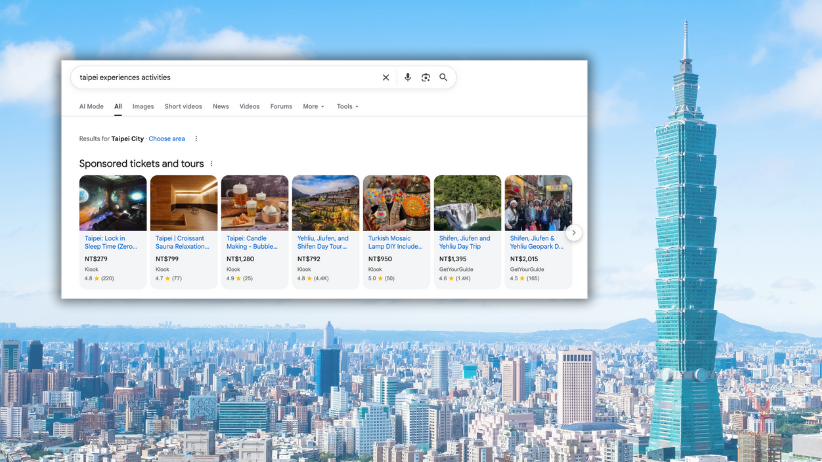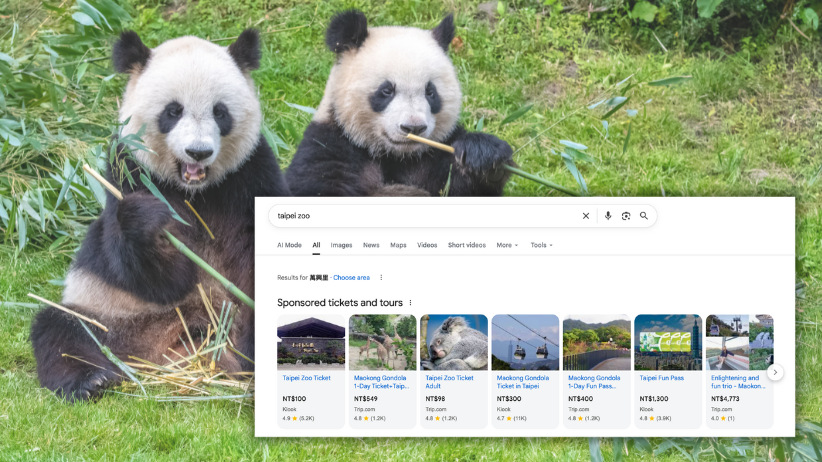
Why “Being Seen in Search” Still Matters?
In the era of AI-driven search, is managing your presence on Google still important? The answer is yes — more than ever. According to Statcounter data, as of October 2025, Google still holds a 90% global search engine market share, maintaining its position as the industry leader.
Because AI-generated results heavily rely on Google’s web ranking, directing traffic back to your own website and collecting first-hand data remain key to strengthening your brand’s visibility in the digital landscape.
Google launched Google Things to do as the latest expansion of its Google Travel ecosystem, aiming to make discovering and booking tours and activities even easier.
If your brand appears in the Google Things to do section, you can reach travelers earlier in their search journey — and guide them directly to booking.This article will guide you through what Google Things to do is and how to make it work for your business.
What Is Google Things to do?
When users search for a destination or a travel-related keyword related to a Point of Interest (POI), the Google Things to do module displays relevant travel experiences at the top of Google Search results.This feature is directly integrated with Google Maps, Google Travel, and Google Business Profiles, making it easier for travelers to discover and book activities.
You might be wondering — what exactly is a POI (Point of Interest)? It’s something you interact with every day. A POI refers to a specific landmark or location of interest on a map — such as attractions, museums, or scenic spots. They’re widely used in maps, navigation systems, travel guides, and GIS platforms to help users find places they want to visit.
For example, if you search for “Taipei 101 Observatory”, Google Search may display:
The official website and ticket prices
Ticket options from platforms like KKday, Klook, or Trip.com
Direct booking links
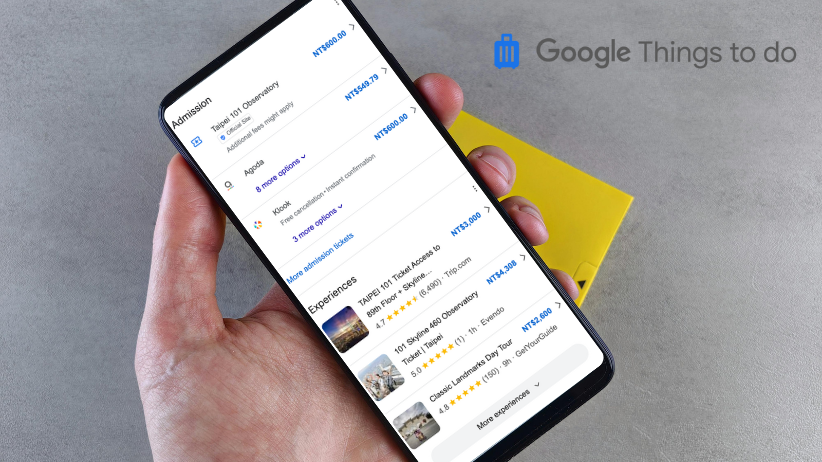 For travel brands, appearing in Google Things to do not only boosts visibility in search results, but also offers the chance to stand alongside major platforms and reach travelers at the perfect moment — when they’re ready to book.
For travel brands, appearing in Google Things to do not only boosts visibility in search results, but also offers the chance to stand alongside major platforms and reach travelers at the perfect moment — when they’re ready to book.
Why Did Google Launch Google Things to do?
1. To help travelers compare experiences in one place
Instead of browsing multiple websites, Google Things to do (GTTD) allows users to compare travel experiences directly within the Google ecosystem. Details such as activity descriptions, duration, pricing, images, ratings, and reviews are clearly displayed, helping travelers quickly find the experience that best suits them.
2. To help operators streamline online bookings
GTTD integrates seamlessly with tour and activity operators’ booking systems, enabling users to go directly from Google Search results to the booking page. This not only simplifies the booking process but also increases the likelihood of direct reservations for operators.
The Four Modules of Google Things to do
Google Things to do (GTTD) consists of four main modules, each designed to enhance how travel experiences appear within Google Search and Maps.
1. Ad Module
Designed for operators using Google Ads, this module lets travel products and tours appear in the “Recommended Activities” section — usually shown at the top or right side of Google Search results. Once the ad account is activated and products are listed, key details such as titles, images, and customer ratings are shown directly in the search results.
2. Booking Module
This module displays ticket prices for attractions or Points of Interest (POIs) that users search for — such as zoos or museums. It enables travelers to easily compare prices between official websites, local agencies, and major online travel agencies (OTAs).
3. Operator Booking Module
This feature allows operators to showcase their products directly on their Google Business Profile. Travelers can find and book both the products listed on the operator’s own website and those available through partnered OTAs — all in one place.
rezio Partner Success Story:
Seabunny Scubacations
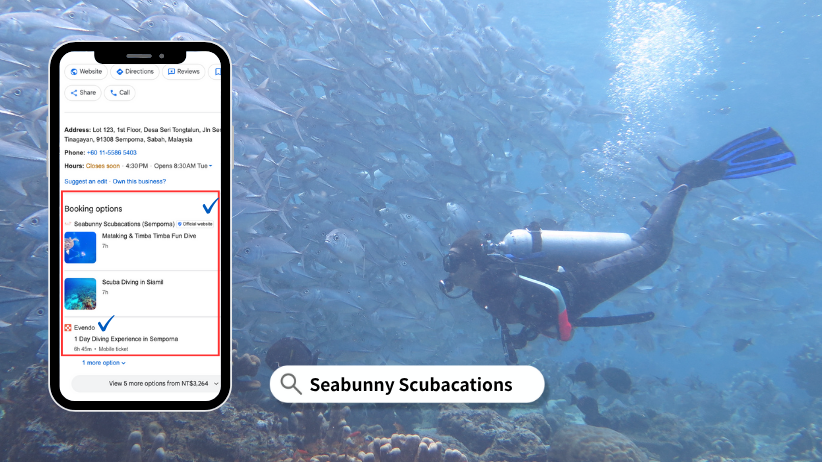
4. Experience Module
This module provides users with a list of activities and experiences related to a specific attraction, often combining entry tickets and activity packages into one offering.
rezio Partner Success Stories:
Ooo Haa Advanture
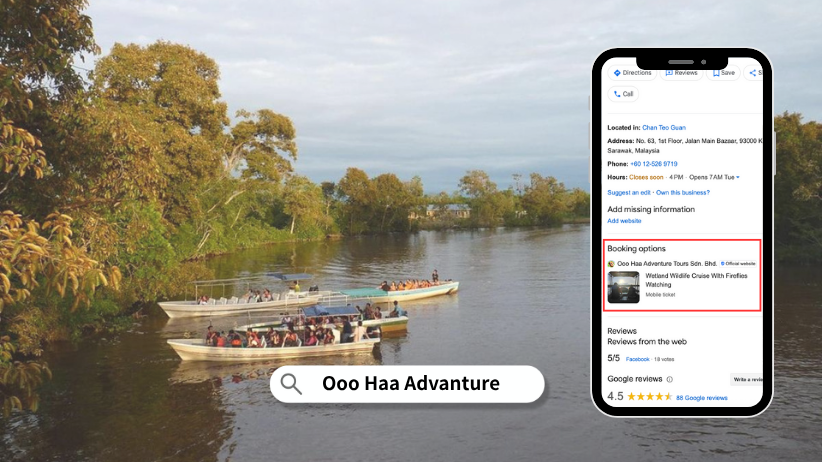
RK Tour & Travel
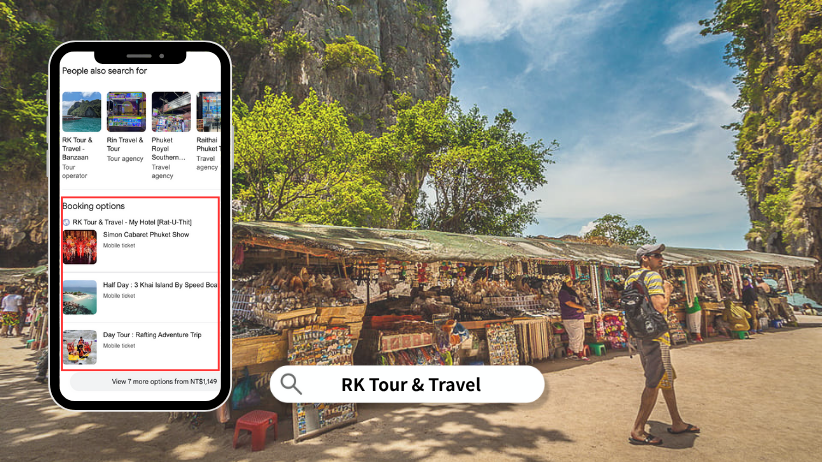 These travel brands have integrated their products with rezio and connected directly to Google Things to do, successfully boosting visibility in search results and driving travelers straight to their own booking pages — capturing conversion opportunities right at the search stage.
These travel brands have integrated their products with rezio and connected directly to Google Things to do, successfully boosting visibility in search results and driving travelers straight to their own booking pages — capturing conversion opportunities right at the search stage.
Benefits for Travel Brands
1. Increase visibility on Google Search and Maps
Google Things to do (GTTD) is a powerful marketing channel. When travelers search for activities related to a specific destination, GTTD listings allow operators to easily showcase their products and services to a highly targeted online audience.
2. Reach more travelers ready to book
GTTD connects high-intent travelers directly to your product pages — with clear descriptions and engaging visuals — helping boost your conversion rate effectively.
3. Drive more direct bookings and reduce marketing costs
By listing products through GTTD, operators can attract more direct bookings, cutting down on OTA commissions and saving marketing expenses.
4. Build trust with online customers
Verified travel agencies and attractions receive an “Official Site” badge from GTTD. This badge appears alongside business information, clearly indicating whether a booking is made directly through the operator or via an agent — enhancing transparency and credibility with potential customers.
How to Connect to Google Things to Do
Google does not allow businesses to upload products directly; instead, integrations must be completed through official partners. rezio is an officially certified Attractions & Activities booking partner for Google.
If you are a rezio user, you can sync your product information—such as product names, prices, and booking links—to Google Things to Do directly through the rezio backend, without any additional technical integration. Your rezio booking link will also appear in your Google Business Profile, guiding travelers straight to your product page to complete their booking!
Once the integration is completed:
Your products will appear in the attraction information card when travelers search for related POIs.
Your rezio booking link will be automatically displayed in your Google Business Profile, making direct bookings seamless.
This integration naturally connects your brand to destination searches, allowing travelers to see your products and prices exactly when they are searching for the attraction.
Connect Google Things to do through the rezio Dashboard
Just three simple steps to link your products and make them visible to more travelers on Google!
Step 1| Go to the rezio Dashboard → “Channel — My Booking Site”, and publish your MySite as your official website.
Step 2| Publish your MySite or Widget URL.
Step 3| Enable Google Things to do integration.
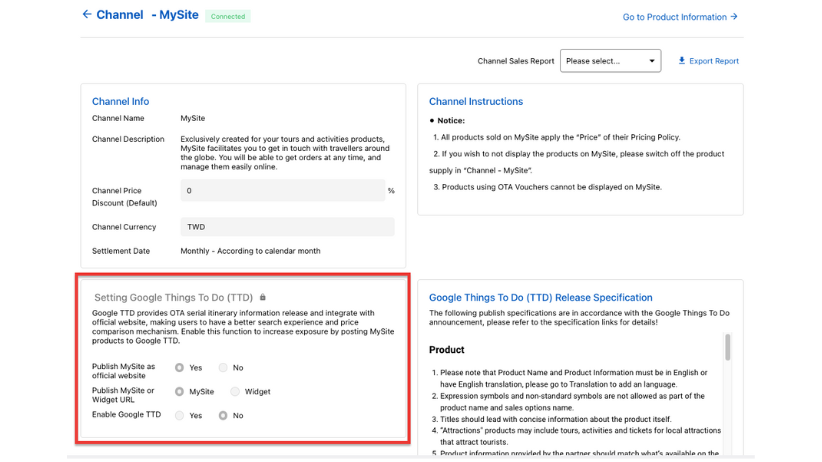 📘 See the full setup guide: rezio Help Center — Channel Management | Connect to Google Things to Do
📘 See the full setup guide: rezio Help Center — Channel Management | Connect to Google Things to Do
rezio — Your Key Partner in Brand Growth
rezio is not just your booking platform — it’s your key partner connecting Google, social media, and your brand site.Through all-in-one integration, you can easily manage website bookings, distribution channels, and online payments — streamlining operations and boosting conversions.
Want to learn how rezio can help your travel experiences get discovered and booked more smoothly? 👉 Book a one-on-one consultation today to get personalized support!
Stay connected with us — follow rezio’s social channels for more brand stories, success cases, and inspiring videos. Turn search visibility into real bookings with the right tools and a connected booking system!
📖 Continue exploring related articles on our blog.
📍What is Online Booking? 5 Signs It's Time to Upgrade
📍How GoPanglao Captures Traffic and Turns It into Bookings
📍Travel Marketing in the AI Era: A Dual-Engine Strategy of Brand Pages and Social Media

